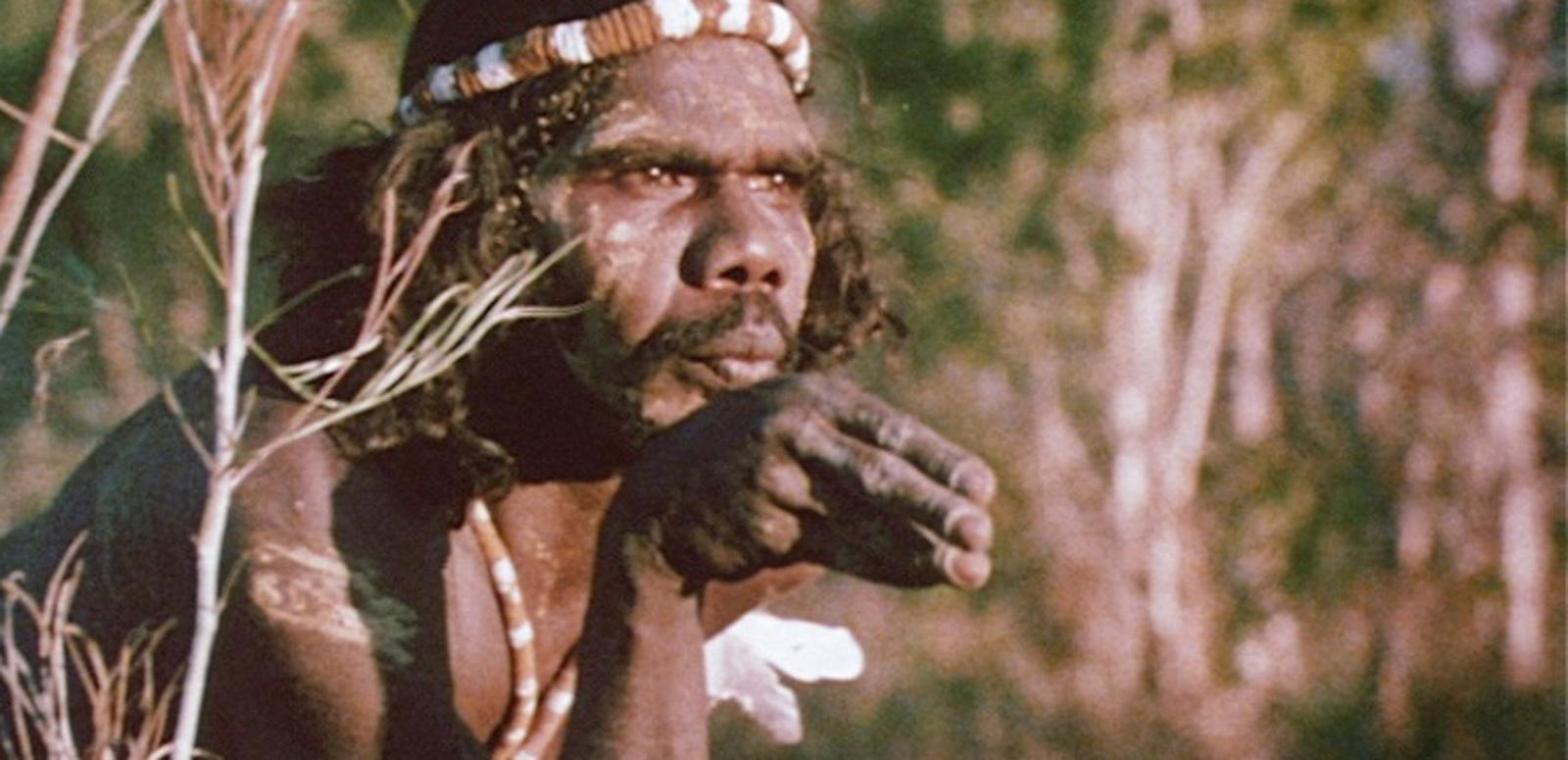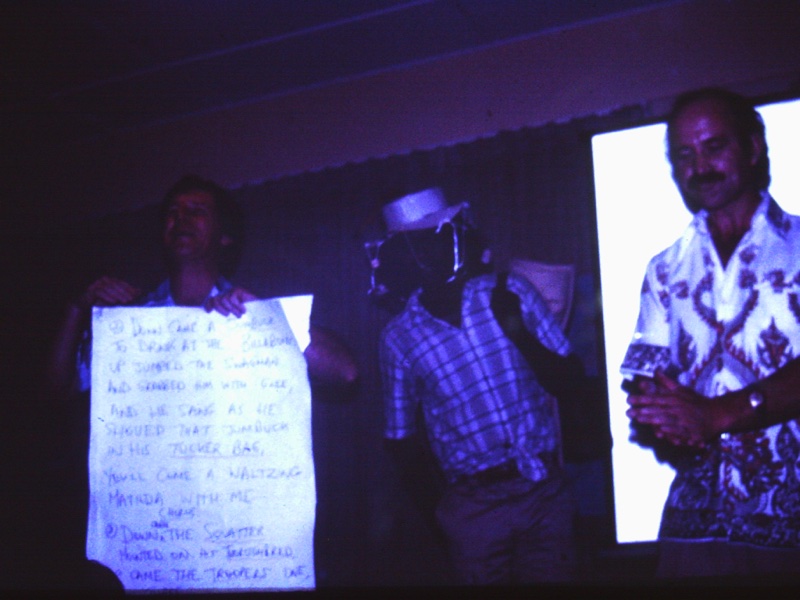BY BETH TAYLOR


BY BETH TAYLOR
WARNING: Aboriginal and Torres Strait Islander viewers are advised that the following program contains images and/or audio of deceased persons.
For NAIDOC Week 2021, we are delighted to share this never-before-seen home movie footage of screen legend, dancer, painter and storyteller David Gulpilil Ridjimiraril Dalaithngu AM and others performing in 1979.
Gulpilil performs traditional dances alongside dancer Dick Plummer, accompanied by prominant didjeridu player David Bylanadii (Blanasi) and songman Djoli 'Jolly Lajwonga' Laiwanga.
This captivating Super 8 film was shot by CSIRO scientist Dr Gavin Gillman at the official Australia Day reception at the Consul-General William Rowe's residence in Honolulu in 1979:
Dancers David Gulpilil and Dick Plummer accompanied by David Blanasi on didjeridu and songman Djoli 'Jolly Lajwonga' Laiwanga, 1979. Courtesy Dr Gavin Gillman. NFSA: 1635100
Filmmaker Rolf de Heer showed Gulpilil the footage recently and he was entranced, loving the chance to see himself as a young performer.
Dr Gillman, who was spending a sabbatical at the University of Hawaii at the time, remembers the night fondly.
He recalls, '[David] really was generous with his time that evening. One of my kids has the $1 note he signed as Fingerbone Bill' – his character in Storm Boy (Henri Safran, 1976).
As you can see by the abrupt end of the clip, Super 8 film cartridges were only 3-minutes long and unfortunately Gillman only had two reels that night. It's a tantalising ending that leaves us wanting more ... and indeed there was a second act that night.

Dr Gillman recalls, 'My greatest regret was not getting any footage of events at the Newman Centre after the dancers had given their evening performance.
'David changed into his normal attire (see photo opposite) and we drew up the words to "Waltzing Matilda" on a large sheet of butchers paper in order to educate our international audience. We fashioned a makeshift cork hat and swag for David, and went on stage to belt out a rousing rendition of "Waltzing Matilda".'
It's incredible to think of that special night over 40 years ago and all of the stories that may lie in the bottom of someone's cupboard – or in this case, in their shed – awaiting discovery.
Many thanks to Dr Gillman for donating this significant footage to the NFSA.
After publishing this article in July 2021, we heard from Anthony Wallis, Director of the Aboriginal Artists Agency Ltd, who generously supplied further information about how this performance came about:
The Australia Council's Aboriginal Arts Board, formed in 1973, developed close relations with the Bishop Museum, the Hawaiʻi State Museum of Natural and Cultural History, mainly through the Festivals of Pacific Arts which began in 1972. The Aboriginal Artists Agency Ltd was formed in 1976 as an entrepreneurial and management agency for Indigenous artists. In January 1979 they undertook a tour of Hawaii (mostly Honolulu) for the Bishop Museum presenting music and dance for a series of public performances, both within the museum and without at venues like shopping centres and the Kamehameha schools.
David Gulpilil was joined by Djoli Laiwanga (his mentor at that stage of his life) and Djoli's team of David Blanasi and Dick Plummer, all from Bamyili, NT. I travelled with them as manager of the Agency; we were housed by the East West University (from memory). The Australian Consulate took a background role but the resident consul William (Bill) Rowe struck up a friendship with us over our week there and we agreed to do an extra performance exclusively for the Consulate. The only suitable venue was the consul's residence which had a large garden and Rowe hit upon the idea of combining our performance with the celebration of Australia Day, one of the Consulate's 'big nights of the year' there in Honolulu.
So it was all serendipitous really and very 'Australian' - which made the slightly homesick performers feel very proud and happy and 'at home' after the stresses of flying to Hawaii for just a week, from Arnhem Land. Of course Gulpilil was already an experienced performer; he finally won the Darwin Eisteddfod in 1972 as a dancer after many favourable mentions leading up to that point. He was supported by those men senior to him in the traditional sense - Djoli Laiwanga, David Blanasi and Dick Plummer - who were even more experienced at cross-cultural performance events. Later that year (1979) I arranged for them to appear in France at the Festival des Arts Traditionnels, Rennes, Brittany where they made an LP for distribution in Europe.
-Anthony Wallis – Director, Aboriginal Artists Agency Ltd
You can immerse yourself in David Gulpilil's extraordinary story and cultural legacy in the online curated collection and the portrait written by Liz McNiven.
You can learn more about the Yolngu people at the Twelve Canoes and Still Our Country websites.
Main image:
The National Film and Sound Archive of Australia acknowledges Australia’s Aboriginal and Torres Strait Islander peoples as the Traditional Custodians of the land on which we work and live and gives respect to their Elders both past and present.